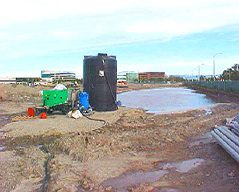The size of the specific site plays an essential role in the selection of its correct stormwater filtration system. However, stormwater treatment systems usually depend on three sizing:
Flow Rate-Based:
For selecting the stormwater filtration system, the flow rate of the stormwater is determined using different modified rational methods. Ensuring that the stormwater treatment system is approved by the local authorities and it is according to the local rules and regulations is also necessary. The biggest drawback of this system for the heavy storm areas is that the stormwater flow might not be accurate enough. Thus, it might require frequent change of the water filters and an increasing water filtration area. On the other hand, areas with smaller water flow, the stormwater filtration system’s maintenance cost might not be feasible.
Volume-Based:
In the volume-based approach, a filtration device is used with a specific upstream detention component. This method is usually used for a limited water flow like pipelines, ponds, drainages, etc. Therefore, the groundwater treatment and filtration component are small and require a low system installation cost. However, the maintenance cycle is usually short due to the regular flow of pollutants; this results in increasing the overall maintenance cost.
Mass-Based:
The mass-based filtration method is perfect for heavy water flow as it offers a large and powerful filtration system. The filtration systems for mass flow is usually designed based on the field and laboratory testing; therefore, this filtration can efficiently treat stormwater. Because the filtration system is specifically designed to filter large volume, it consistently performs efficiently in the long-term.
All-in-all there are several stormwater filtration solutions available that all have their different requirements and limitations.




